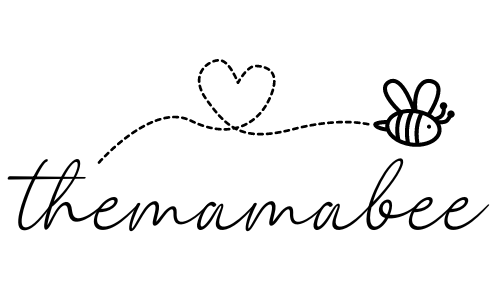The idea of sleep training can bring a mix of reactions and emotions from parents. Every mama has their own approach to sleep and that’s totally understandable – I encourage all mamas to do what feels right and best for them. But if you’re struggling with your baby sleep and looking for guidance on how to train them to sleep longer during the night, I’m sharing a few resources that have helped me navigate my baby’s sleeping journey. That being said, every mama and baby is different so please do what feels right and is comfortable for you.
Training our baby to sleep was our biggest priority since our son was born. I obsessively searched and searched for different resources on the web regarding baby sleep to try to best prepare for his sleep journey. I spent the first few months of his life reading books and articles on how to get extend his naps and nighttime sleep. I am happy to report that it all the research finally paid off! Since 3 months old, our son sleeps on average 10-12 hours every night with the rare exceptional days when he is sick and/or teething.
Below are the top resources that helped me train my baby to sleep through the night:
- Precious Little Sleep. This is the bible of baby sleep books out there! If you do one thing on this list, I highly recommend reading this book. It covers everything you need to know about baby sleep training and even goes into detail about how your baby’s sleep evolves and develops as they grow. I read this book just a few months after my son was born and took detailed notes. I still review and look back on my notes whenever Nathan is showing signs for dropping a nap or going through a sleep hiccup.
- TakingCaraBabies. TakingCaraBabies is another well-known resource. She offers courses for different age groups but I have found her free resources on her blog and Instagram posts to be super helpful and easy to apply when I’m seeking specific guidance on baby sleep.
- BabySleepDr. BabySleepDr is another great Instagram account to follow. She provides easy-to-follow steps on how to sleep train your child in digestible ways. Some of her content is similar to TakingCaraBabies but I found that following a couple different resources was helpful for me because they sometimes covered different approaches and topics.
- Nara Baby app. This is my #1 recommended app for tracking baby’s feeding, diaper changes and sleep! I can’t recommend this enough. It was recommended through our Birth Doula and we still use it ‘til this day to track our son’s sleep. It helps us easily track how long he has been sleeping and his wake windows so we aren’t having to remember all of this information in our heads.
If you don’t have the time to read on the latest baby sleep training book, I am sharing some of the key points that were most helpful for me. Full disclosure that I am not a baby sleep expert so the tips I’m sharing below are from my own personal experiences and what have worked for my son.
- Sleeping independently is the first step to building solid sleeping habits. To sleep independently means your child does not rely on sleep associations such as nursing, pacifier, rocking, etc. in order to be put to sleep. The reason for this is due to the way baby’s sleep cycles operate. Without going into the scientific details of sleep, babies and adults wake up several times during the night. And what helps put babies (and adults) back to sleep is the ability to fall asleep on their own without sleep aids otherwise they will wake up in the middle of the night looking for their sleep aid (ie. pacifier, rocking, etc.) in order to fall back asleep.
- Pay attention to wake windows. Did you know that an overtired or undertired baby won’t sleep well? Yes, it’s true. This was probably one of the most frustrating things for me when sleep training our son. I felt like it was a constant struggle to time the sweet spot for his wake window so that he was tired enough but not too tired. Luckily, there are many great free resources readily available online that can guide you on the appropriate wake window depending on your child’s age. It’s also important to note sleepy cues such as rubbing eyes, yawning and staring into space. This will help you determine when your baby is ready for sleep. Overtime, with enough practice, you will gain confidence in being able to tell when your child is ready for sleep!
- Aim for consistency in their sleep environment at least 80% of the time. This was a good rule of thumb that I followed from the book, Precious Little Sleep. We all have had those moments where our baby falls asleep in the stroller or in the car while we’re out and about. The goal is to remain consistent in their sleep environment at least 80% of the time which provides a little flexibility for those days you can’t fit in their regular nap in your schedule or have a surprise snooze in the car. The ideal sleep environment is on their bed in a cool dark environment. If you typically use a sound machine, this is also considered part of their sleep environment.
- If your baby wakes up early, give them a few minutes to resettle. This was a helpful tip I took away from the book, Bringing Up Bebe, which talks about the sleeping method called “The Pause.” This method is basically giving a few minutes before picking up or responding to your baby’s noise when they wake up. This is because babies tend to make a lot of noise during sleep – this was a huge surprise to me – so responding to every noise they make during their sleep may actually interfere and disrupt their sleep.
These are my key takeaways for baby sleep training! If you have any tips for your baby sleep training, please share them in the comment section below.


